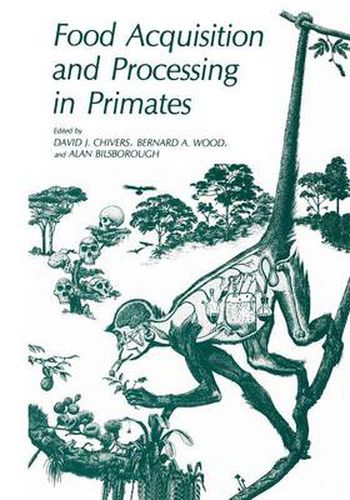Readings Newsletter
Become a Readings Member to make your shopping experience even easier.
Sign in or sign up for free!
You’re not far away from qualifying for FREE standard shipping within Australia
You’ve qualified for FREE standard shipping within Australia
The cart is loading…






This title is printed to order. This book may have been self-published. If so, we cannot guarantee the quality of the content. In the main most books will have gone through the editing process however some may not. We therefore suggest that you be aware of this before ordering this book. If in doubt check either the author or publisher’s details as we are unable to accept any returns unless they are faulty. Please contact us if you have any questions.
This book results from a two-day symposium and three-day workshop held in Cambridge between March 22nd and March 26th 1982 and sponsored by the Primate Society of Great Britain and the Anatomical Society of Great Britain and Ireland. More than 100 primatologists attended the symposium and some 35 were invited to participate in the workshop. Speakers from Prance, Germany, the Netherlands, South Africa and the U. S. A. , as weIl as the U. K. , were invited to contribute. In recent years feeling had strengthened that primatologists in Europe did not gather together sufficiently often. Distinctive tradit ions in primatology have developed in Germany, France, the Netherlands, Italy and the U. K. in particular, and it was feIt that attempts to blend them could only benefit primatology. Furthermore, studies of primate ecology, behaviour, anatomy, physiology and evolution have reached the points where further advances depend on inter-disciplinary collaboration. It was resolved to arrange a regular series of round table discussions on primate biology in Europe at the biennial meeting of the German Society for Anthropology and Human Genetics in Heidel berg in September 1979, where Holger Preuschoft organised sessions on primate ecology and anatomy. In June 1980 Michel Sakka convened a most effective working group in Paris to discuss cranial morphology and evolution. In 1982 it was the turn of the U. K.
$9.00 standard shipping within Australia
FREE standard shipping within Australia for orders over $100.00
Express & International shipping calculated at checkout
This title is printed to order. This book may have been self-published. If so, we cannot guarantee the quality of the content. In the main most books will have gone through the editing process however some may not. We therefore suggest that you be aware of this before ordering this book. If in doubt check either the author or publisher’s details as we are unable to accept any returns unless they are faulty. Please contact us if you have any questions.
This book results from a two-day symposium and three-day workshop held in Cambridge between March 22nd and March 26th 1982 and sponsored by the Primate Society of Great Britain and the Anatomical Society of Great Britain and Ireland. More than 100 primatologists attended the symposium and some 35 were invited to participate in the workshop. Speakers from Prance, Germany, the Netherlands, South Africa and the U. S. A. , as weIl as the U. K. , were invited to contribute. In recent years feeling had strengthened that primatologists in Europe did not gather together sufficiently often. Distinctive tradit ions in primatology have developed in Germany, France, the Netherlands, Italy and the U. K. in particular, and it was feIt that attempts to blend them could only benefit primatology. Furthermore, studies of primate ecology, behaviour, anatomy, physiology and evolution have reached the points where further advances depend on inter-disciplinary collaboration. It was resolved to arrange a regular series of round table discussions on primate biology in Europe at the biennial meeting of the German Society for Anthropology and Human Genetics in Heidel berg in September 1979, where Holger Preuschoft organised sessions on primate ecology and anatomy. In June 1980 Michel Sakka convened a most effective working group in Paris to discuss cranial morphology and evolution. In 1982 it was the turn of the U. K.